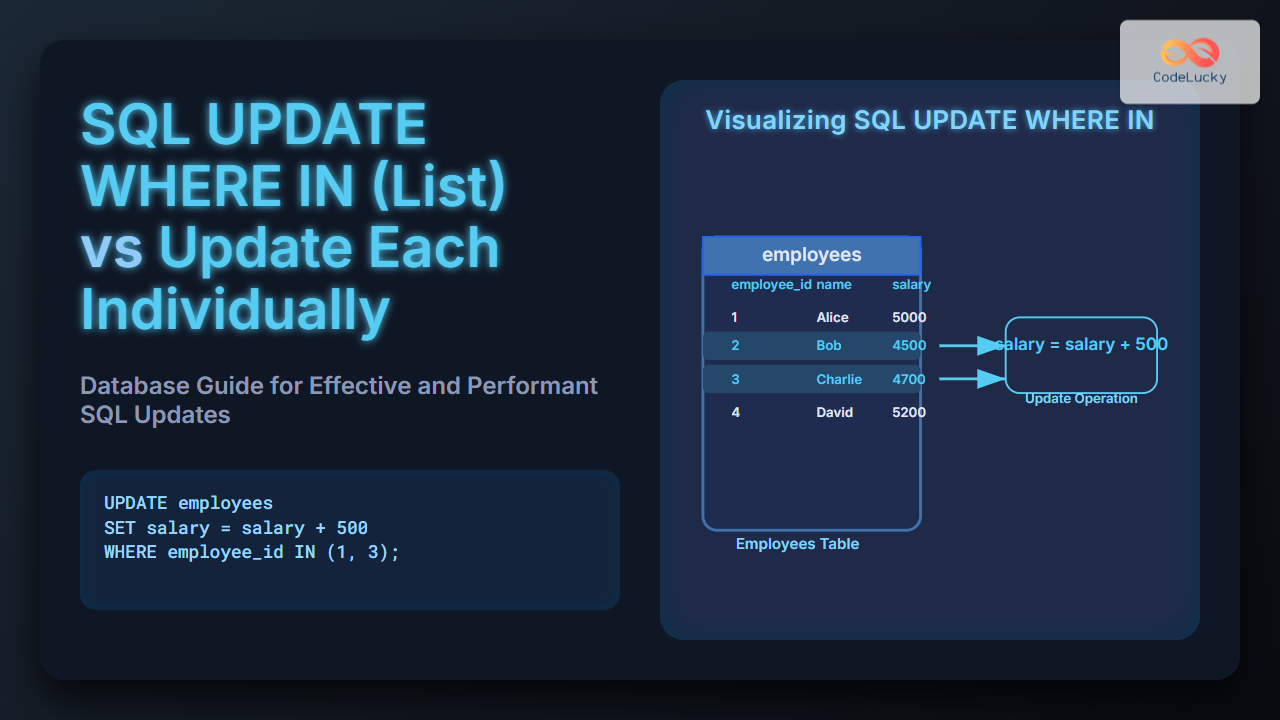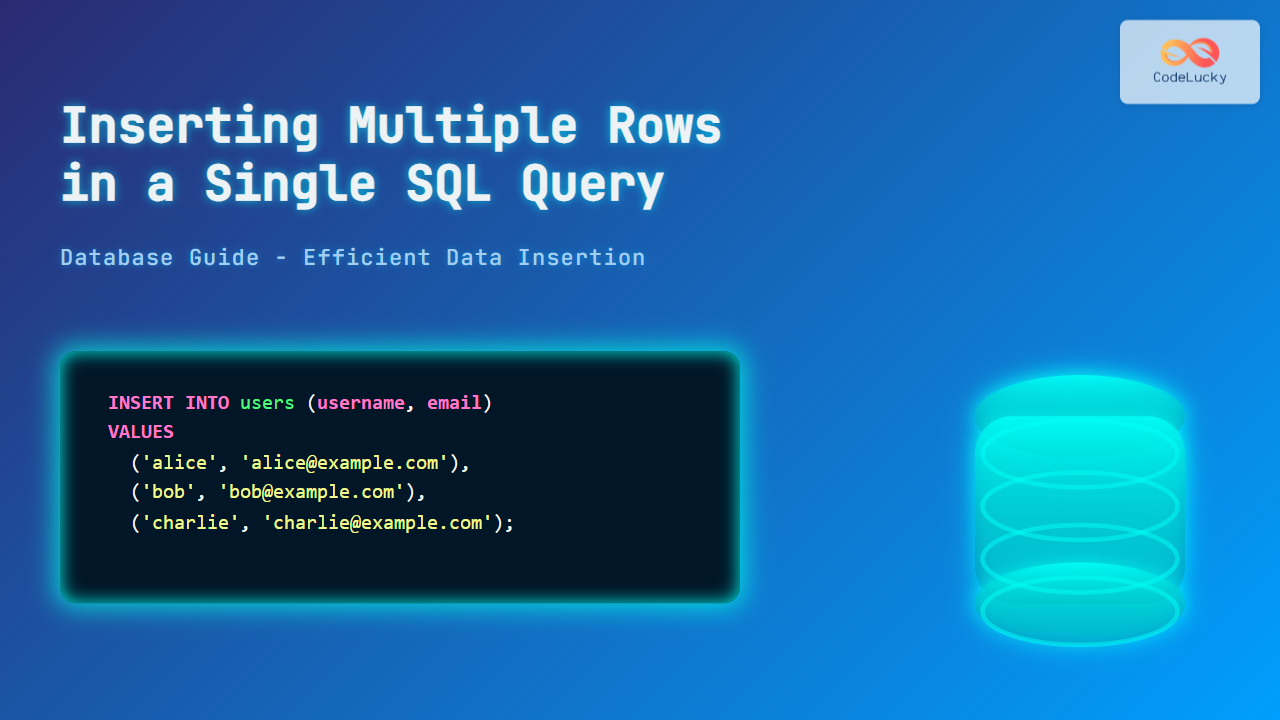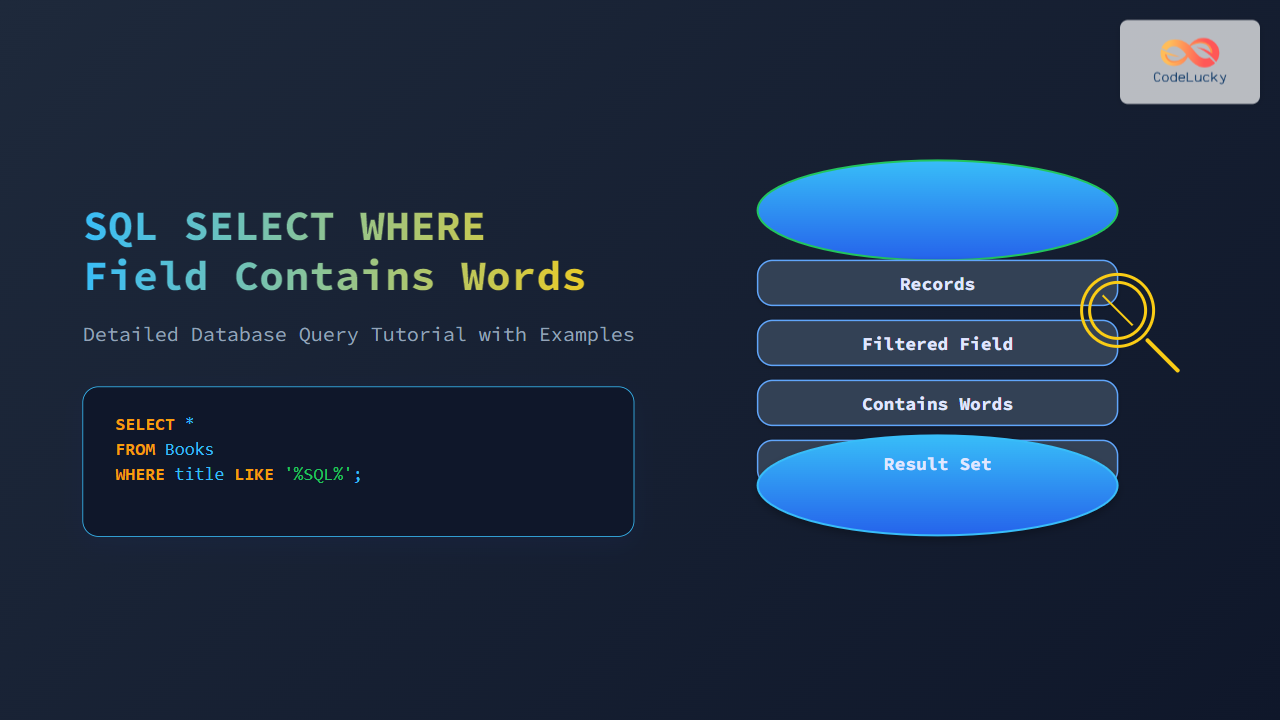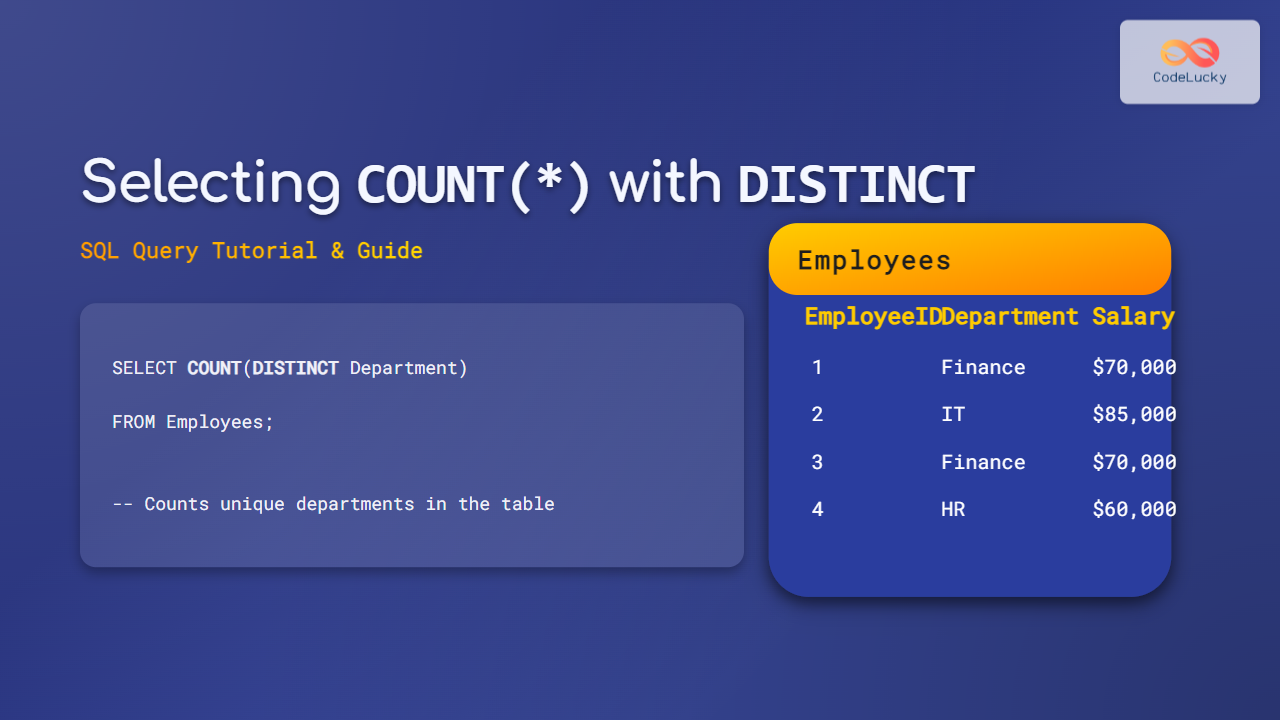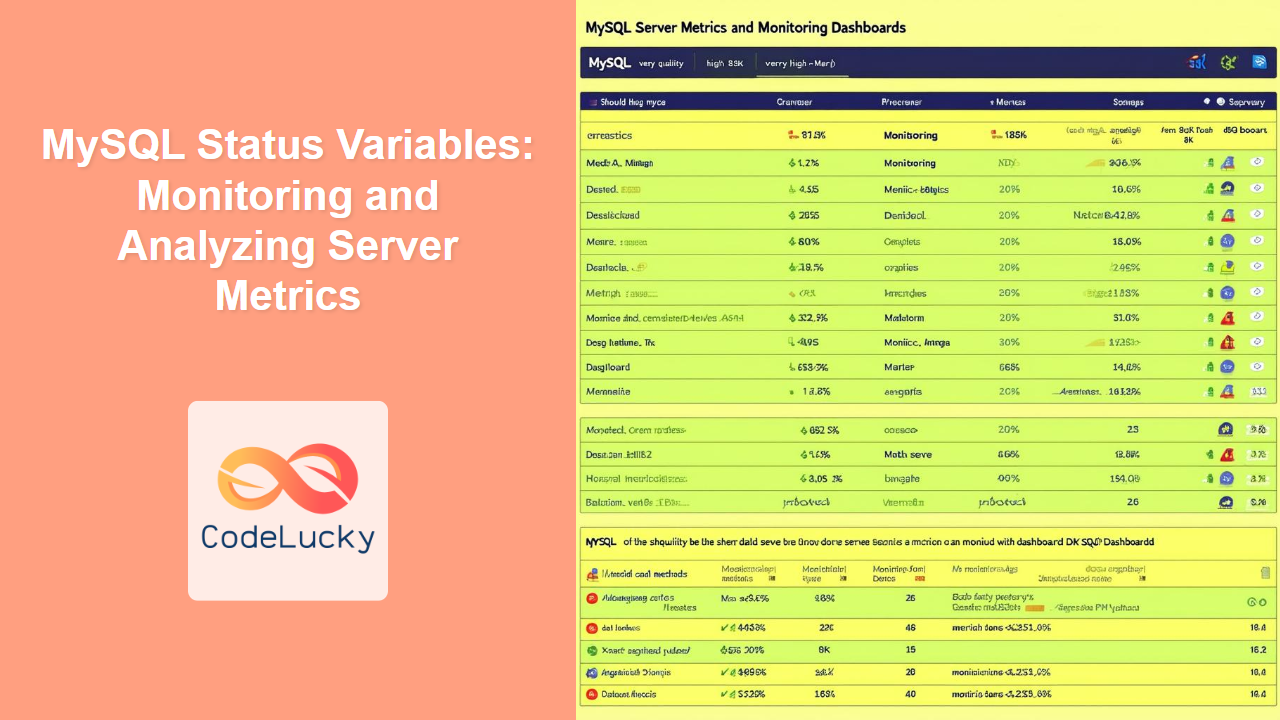In the world of database management, performance is king. As your database grows, so does the time it takes to retrieve information. This is where the SQL CREATE INDEX statement comes into play, offering a powerful tool to supercharge your queries and optimize database performance. 🚀
In this comprehensive guide, we'll dive deep into the world of indexes, exploring how they work, when to use them, and how to create them effectively. We'll cover everything from basic index creation to advanced techniques, providing you with the knowledge to fine-tune your database for peak performance.
Understanding Indexes in SQL
Before we delve into the CREATE INDEX statement, let's first understand what indexes are and why they're crucial for database optimization.
An index in SQL is similar to an index in a book. Just as a book index helps you quickly find specific information without reading the entire book, a database index allows the database engine to locate data rapidly without scanning every row in a table. 📚
Indexes are separate data structures that store a subset of the table's data in a way that's optimized for quick searches. When you create an index on a column (or set of columns), the database maintains a sorted list of values along with pointers to the corresponding table rows.
How Indexes Improve Performance
Let's consider a simple example to illustrate how indexes can dramatically improve query performance.
Imagine we have a large employees table with millions of records:
CREATE TABLE employees (
id INT PRIMARY KEY,
first_name VARCHAR(50),
last_name VARCHAR(50),
email VARCHAR(100),
hire_date DATE,
department VARCHAR(50)
);
Now, let's say we frequently run queries to find employees by their last name:
SELECT * FROM employees WHERE last_name = 'Smith';
Without an index on the last_name column, the database would need to perform a full table scan, checking every single row to find matches. This could take a considerable amount of time for large tables.
However, if we create an index on the last_name column, the database can quickly locate the relevant rows without scanning the entire table, significantly speeding up the query.
The SQL CREATE INDEX Statement
Now that we understand the importance of indexes, let's explore how to create them using the SQL CREATE INDEX statement.
The basic syntax for creating an index is as follows:
CREATE INDEX index_name
ON table_name (column1, column2, ...);
Let's break down the components:
CREATE INDEX: This keyword tells SQL that we want to create a new index.index_name: This is the name you give to your index. Choose a descriptive name that indicates the purpose of the index.ON table_name: This specifies the table on which you're creating the index.(column1, column2, ...): This lists the columns you want to include in the index. You can create an index on a single column or multiple columns.
Creating a Simple Index
Let's create an index on the last_name column of our employees table:
CREATE INDEX idx_employee_last_name
ON employees (last_name);
This index will significantly speed up queries that search for employees by their last name.
Creating a Unique Index
Sometimes, you want to ensure that the indexed column(s) contain only unique values. For this, you can use a unique index:
CREATE UNIQUE INDEX idx_employee_email
ON employees (email);
This index not only improves query performance but also enforces the uniqueness of email addresses in the employees table.
Creating a Composite Index
When your queries frequently filter or join on multiple columns, you can create a composite index on those columns:
CREATE INDEX idx_employee_name
ON employees (last_name, first_name);
This index will be particularly useful for queries that search by both last name and first name.
Advanced Index Techniques
Now that we've covered the basics, let's explore some more advanced indexing techniques to further optimize your database performance.
Partial Indexes
Partial indexes allow you to index only a subset of rows in a table based on a condition. This can be useful when you frequently query for a specific subset of data.
For example, if we often search for employees hired in the last year:
CREATE INDEX idx_recent_hires
ON employees (hire_date)
WHERE hire_date >= DATE_SUB(CURRENT_DATE, INTERVAL 1 YEAR);
This index will only include employees hired within the last year, reducing the index size and improving maintenance performance.
Functional Indexes
Functional indexes are created on the result of a function or expression rather than directly on column values. They're useful when you frequently query based on computed values.
For instance, if you often search for employees by the uppercase version of their last name:
CREATE INDEX idx_employee_last_name_upper
ON employees (UPPER(last_name));
This index will optimize queries like:
SELECT * FROM employees WHERE UPPER(last_name) = 'SMITH';
Covering Indexes
A covering index is an index that includes all the columns needed to satisfy a query. This allows the database to retrieve the required data directly from the index without accessing the table.
Let's say we frequently run queries to get employees' email addresses by their last name:
CREATE INDEX idx_employee_last_name_email
ON employees (last_name, email);
Now, queries like this can be satisfied entirely from the index:
SELECT email FROM employees WHERE last_name = 'Smith';
Best Practices for Using Indexes
While indexes can significantly improve query performance, it's important to use them judiciously. Here are some best practices to keep in mind:
-
Index Selectively: Don't create indexes on every column. Focus on columns that are frequently used in WHERE clauses, JOIN conditions, and ORDER BY clauses.
-
Consider the Write Impact: Remember that indexes need to be updated when data is modified. Too many indexes can slow down INSERT, UPDATE, and DELETE operations.
-
Monitor and Maintain: Regularly analyze the performance of your indexes and rebuild or reorganize them as needed.
-
Use the Right Type of Index: Choose between B-tree indexes (the default in most databases), hash indexes, or specialized indexes based on your specific use case.
-
Index Cardinality: Indexes work best on columns with high cardinality (many unique values). Avoid indexing columns with low cardinality, like boolean fields.
-
Composite Index Order: When creating composite indexes, put the most selective column first.
Measuring Index Performance
To truly understand the impact of your indexes, it's crucial to measure their performance. Most database management systems provide tools for this purpose.
Explain Plans
The EXPLAIN statement is a powerful tool for understanding how your queries are executed and whether they're using indexes effectively.
For example:
EXPLAIN SELECT * FROM employees WHERE last_name = 'Smith';
This will show you the execution plan for the query, including whether it's using an index scan or a full table scan.
Index Usage Statistics
Many databases also provide system views or functions to check index usage statistics. For instance, in PostgreSQL, you can use:
SELECT schemaname, relname, indexrelname, idx_scan, idx_tup_read, idx_tup_fetch
FROM pg_stat_user_indexes;
This query will show you how often each index is being used, helping you identify unused or underused indexes.
Common Pitfalls and How to Avoid Them
Even with the best intentions, it's easy to fall into some common indexing traps. Here are a few to watch out for:
-
Over-Indexing: Creating too many indexes can lead to decreased write performance and increased storage requirements. Always weigh the benefits against the costs.
-
Ignoring Composite Indexes: Sometimes, multiple single-column indexes are less effective than one well-designed composite index.
-
Indexing Small Tables: For very small tables, the overhead of maintaining an index might outweigh its benefits. Full table scans can be faster in these cases.
-
Not Updating Statistics: Many databases use statistics about your data to make indexing decisions. Ensure you regularly update these statistics.
-
Ignoring the Impact of Data Changes: As your data grows or changes in distribution, the effectiveness of your indexes may change. Regularly review and adjust your indexing strategy.
Conclusion
The SQL CREATE INDEX statement is a powerful tool in your database optimization toolkit. By understanding how to create and use indexes effectively, you can dramatically improve the performance of your queries and the overall efficiency of your database.
Remember, indexing is both an art and a science. It requires a deep understanding of your data, your queries, and your database system. Don't be afraid to experiment, measure, and adjust your indexing strategy as your application evolves.
By applying the principles and techniques we've discussed in this article, you'll be well on your way to creating a high-performance, optimized database that can handle even the most demanding workloads. Happy indexing! 🎉














